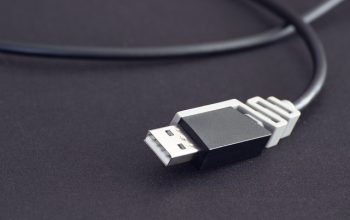Navigating the vehicle title transfer process can be daunting for new car owners. This article demystifies the steps involved in transferring car ownership, providing clarity on DMV title transfer requirements that vary by state. Understanding the nuances of title transfer fees and costs is crucial for a seamless transition. We’ll guide you through each stage, ensuring you complete the transfer of a car title with confidence. Whether you’re a first-time buyer or looking to update your vehicle registration post-purchase, our comprehensive guide and checklist will streamline the process and help you avoid potential pitfalls.
- Understanding the Vehicle Title Transfer Process
- State-Specific DMV Title Transfer Requirements
- Title Transfer Fees and Costs Variations Across States
- Completing the Transfer of a Car Title: Step-by-Step Guide
- Essential Documents for a Smooth Title Transfer
- Navigating Post-Purchase: Title Transfer After Buying a Vehicle
Understanding the Vehicle Title Transfer Process

When navigating the vehicle title transfer process, it’s crucial to familiarize oneself with the DMV title transfer requirements specific to the state in which one resides. This process involves several steps that must be executed accurately to ensure a successful transfer of ownership. Upon purchasing a used vehicle, the buyer is responsible for initiating the title transfer by submitting the necessary paperwork and fees to the Department of Motor Vehicles (DMV). The required documents typically include the completed application form, the existing car title with a sold notice signed over to the seller, proof of insurance, odometer disclosure if applicable, and identification. Additionally, title transfer fees and costs vary from state to state; these may encompass registration fees, transfer taxes, and titling fees, among others. To streamline the process and avoid any unnecessary setbacks, it’s advisable to prepare all required documents in advance and understand the specific timeline for the DMV’s processing of the title transfer application. By utilizing a DMV title transfer checklist, individuals can ensure they have all the necessary components ready before submitting their request, thus facilitating a smoother transition of vehicle ownership. This proactive approach not only helps in adhering to legal requirements but also aids in expediting the entire process, allowing for faster road use once the title is successfully transferred after car purchase.
State-Specific DMV Title Transfer Requirements

Navigating the vehicle title transfer process can be streamlined by understanding the state-specific DMV title transfer requirements that are in place. Each state’s Department of Motor Vehicles (DMV) has its own set of protocols, forms, and fees associated with transferring ownership of a vehicle. Prospective owners must familiarize themselves with these particulars to ensure a seamless transition. The DMV title transfer requirements typically include the submission of the current title, proof of insurance, a completed application form for title transfer, and payment of the applicable title transfer fees and costs. These fees can vary significantly from state to state, so it’s important to check local regulations beforehand to avoid any unexpected expenses or delays. Additionally, certain states may have additional stipulations, such as emissions inspections or odometer disclosures, which must be addressed during the title transfer process after a car purchase. To expedite the transfer, assemble all necessary documentation and fees ahead of time and consult the DMV’s official resources for the most accurate and up-to-date information on how to transfer a car title within your jurisdiction.
Title Transfer Fees and Costs Variations Across States

Navigating the vehicle title transfer process across different states can present unique challenges due to varying DMV title transfer requirements and associated fees. Prospective owners must be aware that each state has its own stipulations, forms, and procedures for transferring car titles, which can influence the timeline and cost of the transaction. To facilitate a smoother transition, one must research the specific title transfer fees and costs for the state where the vehicle is being transferred. These expenses are not uniform across jurisdictions; they can encompass everything from filing fees to sales tax or use tax, depending on whether the vehicle is new or used upon transfer. For instance, in some states, additional documentation may be required to prove the sale or ownership history of the vehicle. The DMV title transfer requirements often mandate the submission of a completed application form, proof of ownership, and satisfactory fulfillment of identity verification procedures. Additionally, if the vehicle is gifted or bought from a private seller, extra paperwork such as an affidavit of gift or a bill of sale might be necessary. To expedite the transfer process post-purchase and adhere to legal obligations, it’s imperative to consult the specific DMV in your state for precise title transfer fees, costs, and necessary documentation. Utilizing a comprehensive DMV title transfer checklist can aid in organizing all required materials and steps, ensuring a timely and compliant vehicle title transfer.
Completing the Transfer of a Car Title: Step-by-Step Guide

Navigating the vehicle title transfer process is essential for new vehicle owners to ensure legal ownership and avoid any complications. The DMV title transfer requirements vary by state, necessitating attention to specific guidelines. To initiate the transfer, one must complete an application for a certificate of title, which is available at the state’s Department of Motor Vehicles (DMV) or online. This form typically requires information such as the vehicle identification number (VIN), seller and buyer details, and odometer disclosure if applicable. Additionally, proof of ownership, such as the previous title or purchase agreement, must be submitted. Once the application is filled out, it should be accompanied by the requisite title transfer fees and costs, which can differ from state to state. These fees are often due upon submission and are non-refundable, so it’s important to be aware of the exact amount beforehand. After the application and necessary documentation have been submitted, the DMV will process the transfer. This involves verifying all provided information, performing a title check, and issuing a new title in the buyer’s name. It is advisable to keep track of the process by using a DMV title transfer checklist to ensure that no steps are overlooked. Efficiency in this process not only facilitates legal compliance but also ensures that the new owner can register the vehicle in their name and obtain insurance coverage without delay.
Essential Documents for a Smooth Title Transfer

When embarking on the vehicle title transfer process, having all the necessary documents in order is paramount to ensure a swift and error-free transaction. The DMV title transfer requirements vary by state but typically include the current certificate of title, which must be signed over to the new owner. If the original title isn’t available, a duplicate can usually be obtained through the DMV or relevant motor vehicle agency. Additionally, proof of ownership, such as a bill of sale or purchase agreement, is often required to document the transfer of the vehicle. Other essential documents may include a valid driver’s license or state-issued ID, which verifies the identity of the buyer and seller. Furthermore, to complete the title transfer after car purchase, you must submit the properly filled out application forms specific to your state’s DMV. These forms serve as an official request for the transfer of vehicle ownership.
Title transfer fees and costs are another critical aspect of the process. These can vary significantly from one jurisdiction to another, so it’s important to be aware of the amounts due beforehand. Typically, these fees cover the processing of your title transfer application, a new title issuance fee, and any applicable state or local taxes or registration fees. To avoid delays, ensure that all checks and payments are made out correctly and accompany your submission to the DMV. By preparing all the required documents and understanding the associated title transfer fees and costs beforehand, you can navigate the DMV title transfer requirements with greater ease and confidence. Utilizing a DMV title transfer checklist can help organize these steps and facilitate a smoother transition of vehicle ownership.
Navigating Post-Purchase: Title Transfer After Buying a Vehicle

Navigating the vehicle title transfer process post-purchase requires attention to detail and an understanding of state-specific DMV title transfer requirements. Once a vehicle changes hands, it’s crucial to promptly initiate the transfer to ensure legal ownership and avoid any potential penalties or delays. The buyer must complete the necessary forms provided by their state’s Department of Motor Vehicles, which typically include a bill of sale, an application for title and registration, and proof of insurance. Additionally, applicants should be prepared for title transfer fees and costs, as these can vary significantly from one state to another. It’s essential to research the exact amount and acceptable payment methods beforehand to facilitate a seamless transaction. The DMV title transfer checklist serves as an invaluable resource, outlining each step from gathering required documents to submitting the application and paying the associated fees. By adhering to this checklist, car owners can navigate the post-purchase process with confidence, ensuring a successful and swift transfer of the vehicle title after the car purchase.
Navigating the vehicle title transfer process can be daunting for newcomers, but with the right information and preparation, it is a manageable task. This article has delved into the intricacies of transferring a car title, highlighting the importance of understanding DMV title transfer requirements which vary by state. It provides a comprehensive guide to the associated fees and costs, ensuring that individuals are well-informed before proceeding with the transfer. By following the step-by-step instructions and having all essential documents in order, the process becomes more straightforward and less prone to delays or penalties. For those who have recently purchased a vehicle, the insights offered here will serve as a valuable resource for a smooth title transfer post-purchase. Remember to utilize the DMV title transfer checklist as your roadmap to successfully complete this procedure. With these tools at your disposal, you can confidently transfer your vehicle title and enjoy the open road ahead.



